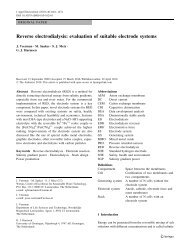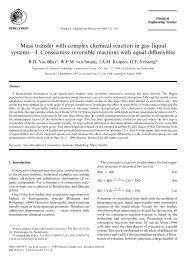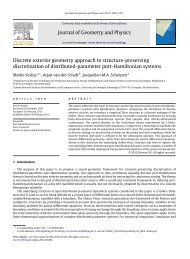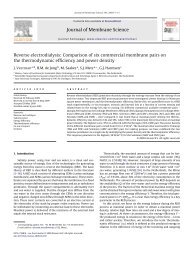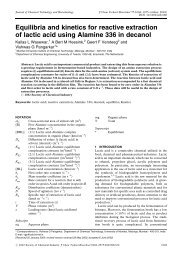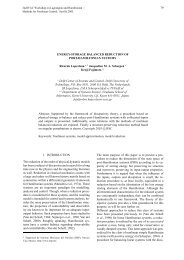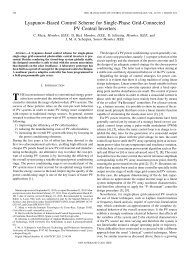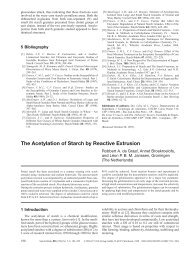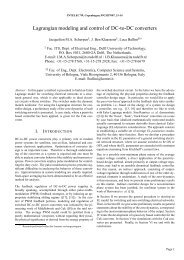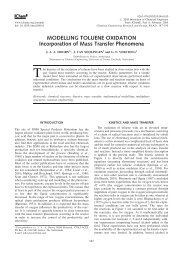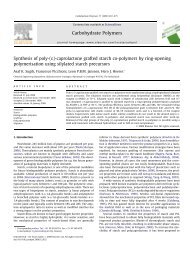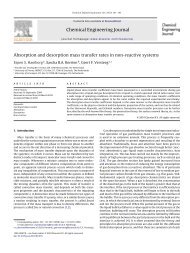FUZZY CLUSTERING, GENETIC ALGORITHMS AND NEURO ... - ITM
FUZZY CLUSTERING, GENETIC ALGORITHMS AND NEURO ... - ITM
FUZZY CLUSTERING, GENETIC ALGORITHMS AND NEURO ... - ITM
You also want an ePaper? Increase the reach of your titles
YUMPU automatically turns print PDFs into web optimized ePapers that Google loves.
602 P.F. VAN LITH et al.<br />
TABLE I<br />
Settings input and process noise<br />
Variable<br />
White noise amplitude<br />
F [ 0.005, 0.005] l/h<br />
S [ 0.2, 0.2] g/l<br />
X [ 0.1, 0.1] gDCW/l<br />
Downloaded by [University of Groningen] at 04:43 19 September 2012<br />
formation rate (h 1 ), K is the product decay constant (h 1 ) and F is the<br />
feed rate (l/h). A complete description of the model is given in<br />
Appendix A. While generating process data using this model, noise<br />
was added: the settings are given in Table I. For the simulations, a<br />
discrete version of the model above (Eq. ((1)–(4)) is implemented.<br />
White noise of a certain bandwidth is added to the reference model<br />
process state at time step k. Since the state of time step k is used to<br />
calculate the state at time step k þ 1, some correlation occurs.<br />
5. Establishing the Hybrid Model Structure<br />
To test the hybrid modeling procedure, it was assumed that the rate<br />
equations in the state equation for the biomass concentration, describing<br />
the specific growth rate and the cell lysis rate, were inaccurate. The<br />
two rates were lumped together to form a net growth rate . Since the<br />
specific growth rate and the cell lysis rate both are functions of S and<br />
X, will also be a function of S and X. The goal is then to develop a<br />
hybrid model for the fed-batch reactor in which is governed by a<br />
fuzzy submodel. Equation (1) then has to be replaced by the following<br />
equation:<br />
dX<br />
dt<br />
¼ Xð DÞ ð5Þ<br />
where is the net growth rate (h 1 ). Furthermore, it is assumed that <br />
is not measurable, while the states of the model (S, X, P and V) can be<br />
measured. Since the fuzzy submodel will be identified using input–<br />
output data, the Sugeno (TSK) type fuzzy model is selected. These<br />
models are usually less complex than linguistic fuzzy models (fewer<br />
rules), which helps transparency.



